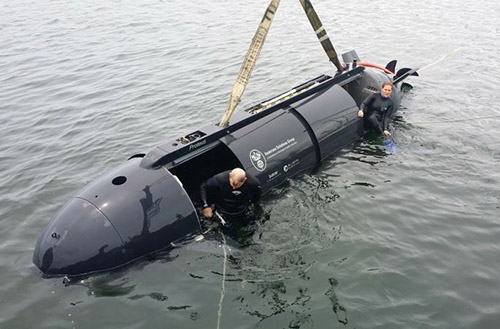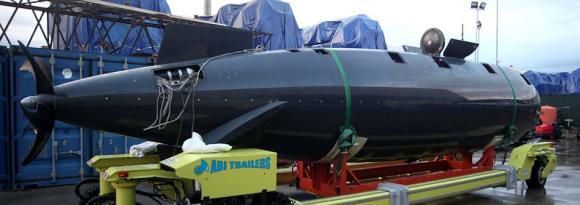The Navy Seal are looking for a new dry mini-submarine for the infiltration of small units on enemy coasts and in hostile environments. The Special Operations Command of the United States or SOCOM, is currently testing new prototypes.
The "User Operational Evaluation System 3" program foresees the use of a dry submarine (in order to reduce fatigue and exposure to elements such as cold or icy water) along a maximum of 31 feet (9,7 meters) and equipped with a complete suite of sensors between navigation systems, gyroscopes, sonar and that implements anti-collision technology.
One of the tested submarines is the "Button" technology demonstrator. Made by General Dynamics Electric Boat and from Italian Giunio Santi Engineering, Button has a displacement of 17 tons and is able to operate at a depth of sixty meters (110 test).
Il Button It is designed to accommodate the crew (1 / 2 members) in the back of the platform. The Seal would leave the submarine through doors located at the top and bottom of the "lock out" room at the bow. The dry chamber, finally, is located in the central part of the submarine. In the dry chamber the Seal can stay dry and converse with each other. The Button has a range of 60 miles.

In 1994, the Pentagon has allocated $ 524 for building a new six-foot submarine fleet from foot 65 for Seal's secret operations. Nine years later, the program hit the $ 2 billion record with deliveries not yet started. In the 2011, SOCOM decided to launch a dry submarine program known as the "Dry Submarine Program".
Although it may seem uncomfortable, the Button presents a substantial improvement compared to Proteus (photo on the right). The recently unveiled "Bat-sub" SDV (Swimmer Delivery Vehicle) of the Seal, is basically an unsealed submarine. The operators are immersed in the water. Among the Seal it is also called the “flooded coffin”.
They add from the Special Operations Command of the United States: "Our goal is to complete our missions and deploy operators to the best of their conditions. Keeping them warm and dry while waiting to get into action, even managing to converse freely among themselves, is essential for the success of the mission ".












